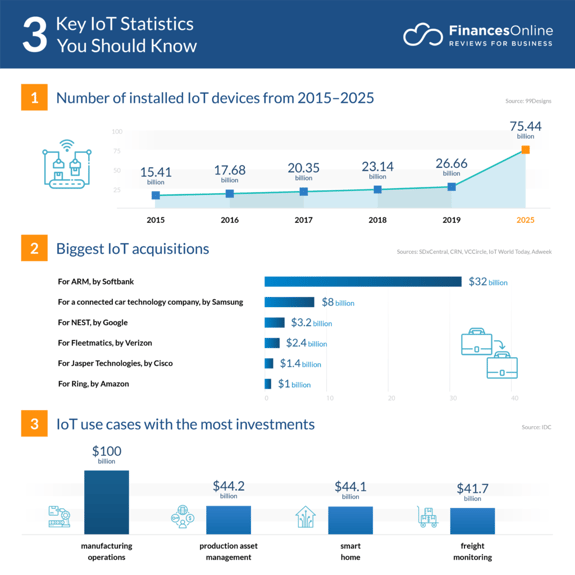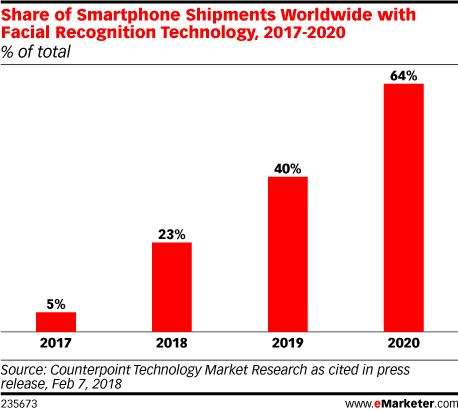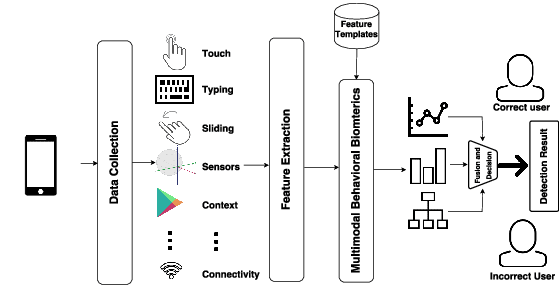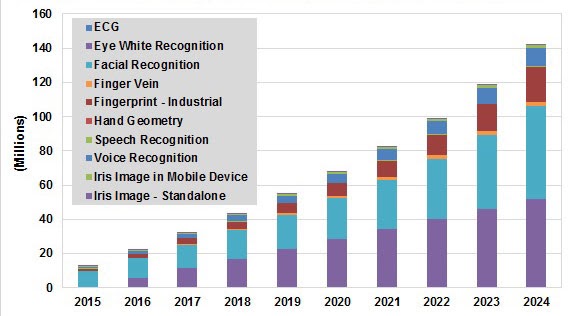How biometrics will shift IoT technology and business practices

IT and security teams worldwide are dealing with the growth of IoT (internet of things) enabled devices in workplaces.
And, even though we’ve made massive strides over the last decade, the safety of these devices and those who use them is a continually revolving door of challenges.
With different ideas and solutions put forward by an array of experts, most seem to be leaning towards biometrics. It’s an area of tech well-suited to safeguarding networks and closing the inevitable back doors that IoT devices can leave open.
Before we explore this, a quick recap.
What are IoT devices?
IoT devices or IoT connected devices are those billions of physical devices connected to the internet, which all collect and share data.
Cheap computer chips and global availability of wireless networks have turned everything from lightbulbs to fighter jets into IoT devices.
Connecting all of these items with sensors brings a sense of ‘digital intelligence’ to a device. That allows for the communication of real-time data between them, without human involvement.
The IoT has made the world around us smarter and more responsive, connecting the digital and physical spheres. This is one of the many ways the customer experience has changed drastically over the years.
Businesses of all shapes and sizes integrate more and more IoT devices. If, for example, a call center wants to implement AI to improve operations, the new efficiency brings with it new security challenges.
Which brings us back to biometrics, the most significant defense an IoT connected business can implement. With great accessibility comes great responsibility.

How biometrics can help businesses
Biometrics answers the most fundamental of security questions: are you who you say you are?
Passwords have indeed become more specific, but there is a limit to how secure a password can be. Biometric technology identifies people based on their unique characteristics. Things like a fingerprint, facial features, iris, or their voice. Features not easily replicated by a hacker.
You can’t lose or forget a biometric identifier. And it’s why protecting IoT connected devices through the uniqueness of a fingerprint or voice is the best way forward.
Amid our current pandemic, where most people are working remotely or only allowing limited access into buildings - there’s never been more reliance on biometric security.
4 examples of biometric security technology
1. Fingerprint readers
When the iPhone 5s came standard with a fingerprint reader, it presented a paradigm shift in public acceptance of biometric security. Before that, fingerprint IDs were associated with policing and crime. That led to a general hesitation to record fingerprints.
Over time, the widespread use of fingerprints in day-to-day life has helped reposition biometric security as mainstream. We’re now used to using our prints to unlock phones and authorize downloads and payments on the best POS systems. There’s also been an increased use of biometrics when crossing borders.
2. Voice biometrics
Beyond a fingerprint, voice biometrics uses a person’s voice as a way of identifying them. Also referred to as voice verification, we see it used daily with Amazon Alexa and Google Home. It enables frictionless and secure access to everything from IVR Menu call center identifiers, VoIP, mobile and online applications, and yes, IoT devices.
3. Facial recognition technology
The latest smartphones all come standard with facial recognition technology, making it the latest biometric security measure to have gone mainstream. Utilizing a digital or connected camera, facial recognition technology detects faces in images. It then calibrates their features and matches them against an approved face saved in a database.

4. Iris recognition technology
And lastly, iris recognition is another biometric identifier that will see more everyday applications for IoT devices. While iris recognition may feel like something from science fiction movies, it's a reliable measure to identify individuals securely. It’s already getting increasing use in the FinTech sector.
Behavioral biometrics
A new generation of IoT security is behavioral biometrics. It identifies a person based on the unique way he or she interacts with devices. That might be smartphones, tablets, or traditional PCs.
By measuring and collating everything from how a person holds the phone, how hard they tap a screen, their keyboard shortcuts, or even how quickly the type, the software can build a unique profile to confirm an identity.Behavioral biometrics relies on now commonly found mobile and IoT devices to ingest relevant data points to ID a user. The more an IoT connected device is used, the better the data, which in turn provides a continuous authentication process during its use.
This individual pattern is hard to replicate maliciously. It's tied to each person's inherent 'human' behavior. This means real-time AI algorithms can validate a person's identity, even as the activity progresses. As an example, keyboard metrics can detect changing behavior throughout a transaction and shut out suspicious changes.

Business applications of biometrics
Beyond security, there are other practical uses of biometrics. Ensuring both employee safety and competency is a significant hurdle many multi-faceted businesses face.
As more and more regulations and requirements are added to each job role, measuring data and keeping it up to date is essential. Completing a biometric profile of each employee can be invaluable. It means a single location (often a cloud PBX system or other internal databases) can hold all info needed for assigning credentials, tracking training progress, and time-logs.
By creating a comprehensive profile of an employee through biometrics, a business can track time, data usage, and training and certification with less complexity.
This helps companies to comply with regulatory agencies, as well as helping to keep employees safe while they’re in the office.
In addition, biometric solutions have proved useful in preventing time loss. Biometric time clocks analyze how much time a person spends in the office.
That’s rather than using a pin code, paper clock in, lanyard key card, or employee number. An employee ID card can easily be handed off to another employee if that person wishes to clock out early or avoid coming in. A fingerprint or other biometric data isn’t so easy to share with someone else.
Using biometrics in the office eliminates this form of time fraud and ensures accurate compliance with an office’s attendance policies.

The future of biometrics and IoT
There’s an incredible amount of data exchange happening around the world every minute.
This process must be safe for end-users. This is where the combination of biometrics and the IoT becomes crucial. It’s a way to trade data between devices while enhancing the security of the whole process.
This type of integration leads to:
- Smarter security solutions
- Advanced monitoring of guarded systems
- Customizable features for more personalization
- Instant authentication processing with less complexity
- Quicker data analysis
- Advanced alerts with better hack-proof systems
- Remote access with secure collaboration
- Multi-platform compatibility
- Removes the need to keep a set of passwords
Today, the need for devices to connect and integrate has never been more in demand, particularly during the COVID-19 pandemic. More and more governments are relying on methods like contact tracing to help curb the spread of the virus.
With the growing use of these applications, the biggest concern is whether there are suitable security measures to protect confidential information.
Any technological advancements should be done in a way that doesn’t compromise personal data. The unique pairing of biometrics and IoT can be trusted to ease the way a business handles, stores, and protects confidential information.
Sam O'Brien is the Senior Website Optimisation & User Experience Manager for EMEA at RingCentral, a Global VoIP and Call Centre software provider. Sam has a passion for innovation and loves exploring ways to collaborate more with dispersed teams. He has written for websites such as Student Job and Krisp. Here is his LinkedIn.


